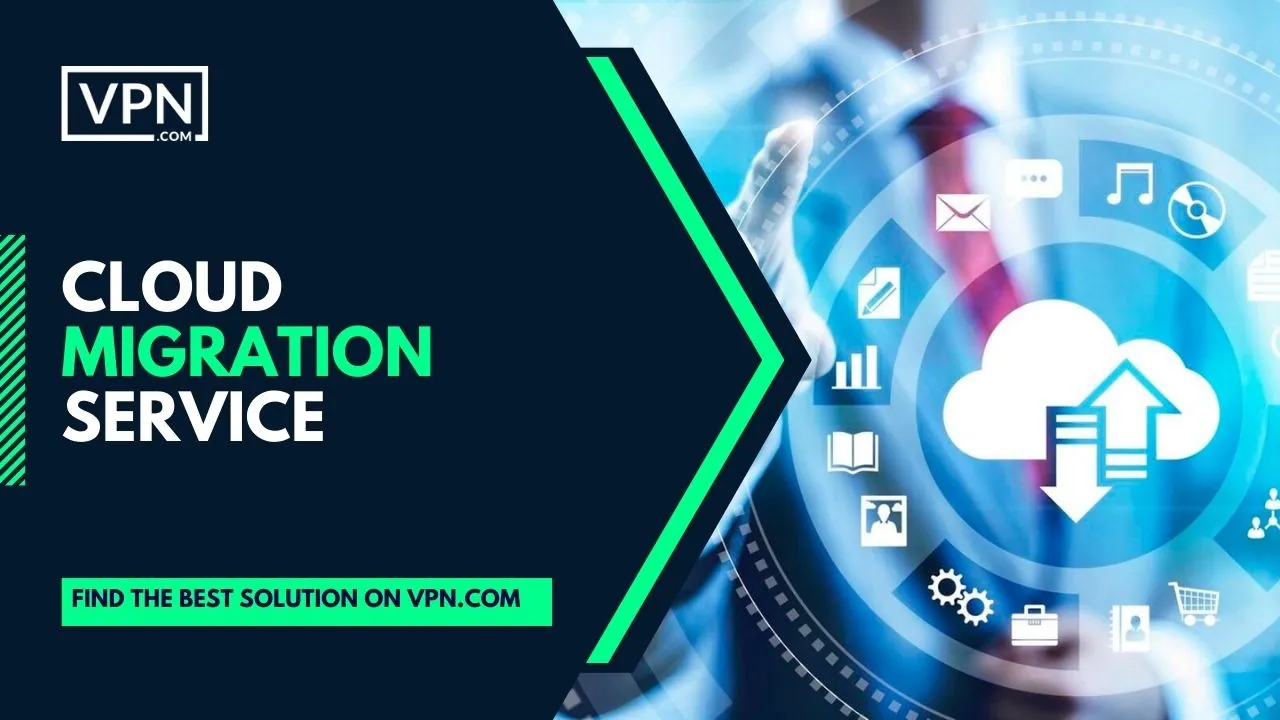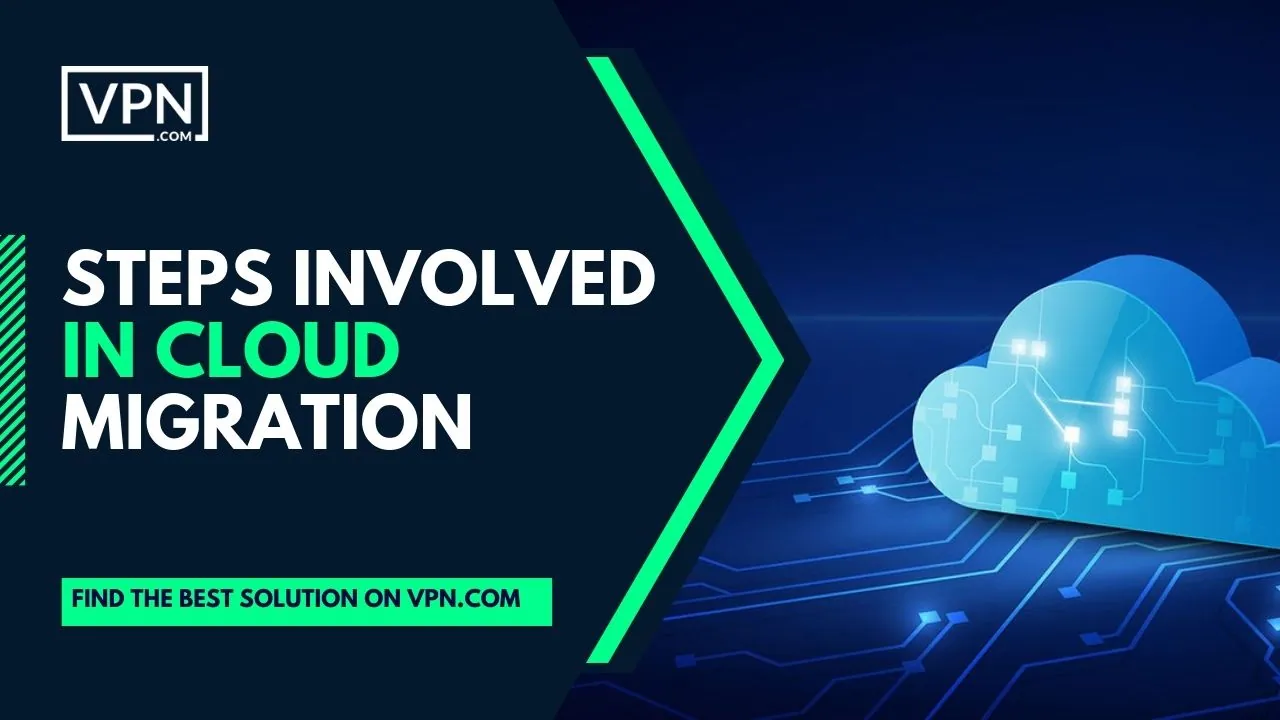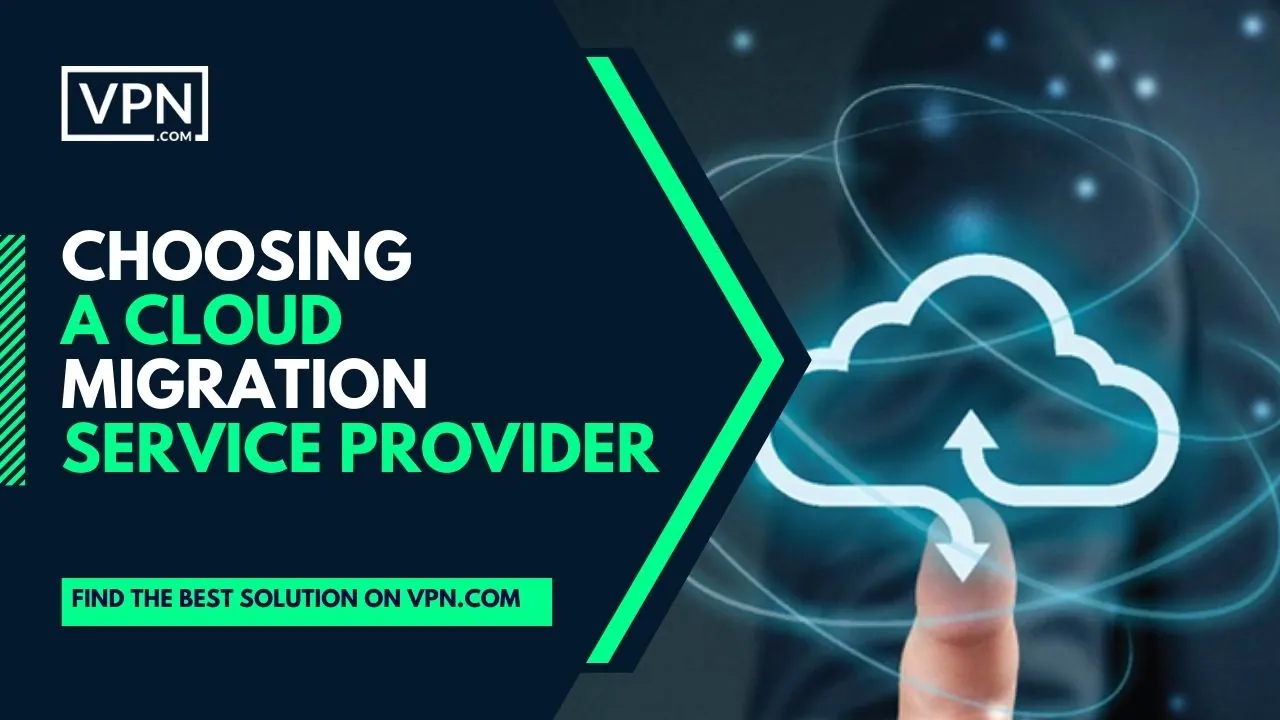Cloud Migration Service: Types, Benefits & Challenges

The process of migrating digital assets like apps, data, and IT processes from a physical infrastructure to a virtual environment is referred to as cloud migration service. These days, companies rely on cloud migration service to increase IT flexibility, save operational expenses, and improve scalability.
Businesses should consider moving to the cloud since it can provide cutting-edge technology solutions like cloud hosting and storage while also maintaining the protection of sensitive data.
We will go deeper into the process, advantages, and problems of cloud migration in this blog article, as well as address concerns about where to begin and what factors to bear in mind. You will have a greater grasp of the advantages cloud migration service bring to businesses by the end of this blog post, as well as how to approach the process successfully.
Benefits Of Cloud Migration Service
In today’s quickly changing business environment, increased scalability has become the foundation of growth for businesses of all sizes.
Thankfully, technological breakthroughs have made achieving this scalability easier and less costly than ever before.
- Adopting cloud migration services and other creative solutions, organizations may reduce their reliance on expensive hardware, streamline their data storage and management processes, and increase their operational flexibility.
- Enhanced scalability enables businesses to adjust swiftly to shifting market conditions, boost their bottom line, and maintain a competitive advantage.
- Businesses can save money on hardware, streamline data storage and management, and increase their operational flexibility by adopting cloud migration service and other cutting-edge solutions.
Improved Scalability
In today’s environment, firms must be adaptable and quick to adjust. This is where the capacity to swiftly scale up or down comes into play.
Businesses are able to quickly adapt to changes in traffic and workload demands without having to invest in on-premises infrastructure upgrades.
Saves organizations time and money and also enables them to easily handle unanticipated traffic increases.
Businesses take control of their infrastructure and attain the amount of adaptability required to operate in today’s fast-paced environment.

Signup at our #1 host
- Reduce Costs
- Shorten time to market
- Increase efficiency
- Improve agility & consistency
Cost Efficiency

Companies in today’s ever-changing technological environment are always on the lookout for methods to improve productivity and cut costs. Significant savings can be realized in this regard by switching to hardware and software with lower upfront costs.
Companies may get everything they need without having to buy pricey servers and software.
Businesses can save money by switching to a pay-as-you-go pricing model since they only have to pay for the services they actually use.
Businesses may relax without worrying about hefty upgrade and maintenance bills thanks to cheaper maintenance and support.
Using these strategies to cut costs can lead to a more simplified and cost-effective approach to technology, freeing up resources to be put toward what really counts for businesses: reaching their objectives and expanding.
Greater Flexibility
The advent of new technologies has greatly altered the modern workplace. Accessing resources from any location at any time has provided organizations with previously unimaginable possibilities.
This not only facilitates quicker and more efficient work, but also gives workers the option to conduct their jobs from anywhere, be it their own house, a coffee shop, or even another nation.
It’s crucial to stay vigilant in exploring the finest solutions for your organization despite the rapid deployment of new applications and the ease with which you may experiment with new technology. Companies can use these innovations to their advantage if they give them some thought and plan ahead to implement them.
Improved Reliability And Availability
In the current digital environment, high availability and redundancy are more crucial than ever. Companies rely largely on their digital infrastructure to function effectively and efficiently, making downtime a significant worry.
Here is where catastrophe recovery capabilities are implemented. By being able to recover swiftly from system failures, organizations can ensure that their operations continue to run effectively and without substantial disruptions.
With effective redundancy mechanisms in place, companies can be assured that their systems are always accessible and operational. When downtime is not an option, high availability and redundancy are crucial success factors.
Enhanced Security
Protecting sensitive data from malicious attacks is crucial in today’s digital age. With the rapidly increasing threat of cybercrime, it is imperative that companies implement stronger data encryption and protection measures.
This goes beyond just complying with industry standards and regulations, as even the slightest vulnerability can expose sensitive information. Regular security updates and patches are also essential in preventing zero-day exploits and staying ahead of potential threats.
By prioritizing the safety of their customer’s private data, companies not only strengthen their trust with consumers but also ensure the longevity of their business in an ever-evolving technological landscape.
Improved Scalability
Cost Efficiency
Greater Flexibility
Improved Reliability
What Are The Types Of Cloud Migration Strategies?

There are several options available for updating or migrating software systems. Rehosting is the process of moving an existing system, whether it be a cloud platform or physical servers, from one environment to another.
Replatforming in the context of cloud migration service involves moving software to a new platform while incorporating modernization upgrades, like database or operating system updates. Refactoring, on the other hand, requires restructuring the code in order to improve its design, maintainability, and scalability.
Each technique offers pros and cons of its own, but the choice ultimately comes down to the specific requirements and goals of the company. Organizations can choose wisely by assessing the benefits and drawbacks of various software system update methods.

Signup at our #1 host
- Reduce Costs
- Shorten time to market
- Increase efficiency
- Improve agility & consistency
Rehosting
Rehosting is a method of migrating an application from one environment to another without making any significant changes to the application’s architecture or codebase. This type of migration strategy is often used in the cloud migration service industry because it allows for a quicker, more straightforward transition to the cloud.
The main advantage of rehosting is its speed; it’s typically the fastest way to move an application to the cloud. However, it can also be the least effective way to take advantage of cloud-native features.
Rehosting is best suited for situations where an application needs to move from on-premises infrastructure to a cloud provider as quickly and seamlessly as possible. One prime use case for rehosting is in disaster recovery situations. If an application needs to be restored and run quickly after a disaster, rehosting is often the best option.
Replatforming
Replatforming is the process of migrating an existing software application to a new platform. This process can be triggered by several business needs, such as improving performance, adding new features, or enhancing security. Replatforming has a close relation to cloud migration service, which facilitate the move of applications from on-premises infrastructure to the cloud.
One of the advantages of the replatforming approach is that it allows businesses to upgrade to a newer platform without disturbing the application’s functionality. However, the downside is that it can be an expensive and time-consuming process.
Nevertheless, there are many use cases where businesses can benefit from replatforming, such as upgrading legacy systems, consolidating IT environments, or building a more scalable infrastructure.
Refactoring
Refactoring is an essential process in software development that involves restructuring and optimizing code without altering its behavioral output. It typically aims to improve the quality, maintainability, and efficiency of software products while reducing technical debt.
It is especially important for applications that have undergone cloud migration service since the structure and architecture of such applications can be impacted significantly. Although refactoring requires time and resources, it yields several benefits such as improving code quality, increasing productivity, and reducing maintenance costs.
Some of the use cases for refactoring include code reorganization, improving application performance, and enhancing the scalability and reliability of software. All in all, refactoring is an indispensable aspect of modern software development that improves the agility, reliability, and efficiency of software products.
Hybrid Migration
Hybrid migration is a type of cloud migration strategy that combines the use of on-premises and cloud-based resources. It first migrated some applications from an on-premise environment to the cloud and then gradually moved other applications based on the needs and requirements of a business. Hybrid migration is an excellent way to benefit from the advantages of both the cloud and on-premises.
With hybrid migration, businesses can scale their infrastructure and optimize their costs without compromising on security and compliance. However, it does involve certain challenges, such as increased complexity, data security, and management.
Hybrid migration is widely adopted by organizations, especially those with distinctive workloads, availability or regulatory requirements. Overall, hybrid migration can provide a tailored cloud solution that addresses specific business needs.

Signup at our #1 host
- Reduce Costs
- Shorten time to market
- Increase efficiency
- Improve agility & consistency
Multi-Cloud Migration
Multi-cloud migration is the process of transferring an organization’s digital assets, data, and workloads to several cloud environments. Businesses that utilize multiple cloud providers can expand their options and resource distribution, reduce costs, and improve performance across their distributed systems.
This migration process can be facilitated through cloud migration service; they provide a cost-effective and reliable way to move data and applications to a target cloud. The main benefits of multi-cloud migration are its resilience, flexibility, and cost-effectiveness.
However, there are potential hurdles to consider, such as security issues, data management, and the complexity of coordinating multiple environments. This migration approach has several use cases, including disaster recovery capabilities, vendor lock-in avoidance, and better geographical coverage. Overall, organizations seeking to deploy multi-cloud solutions must take into account these considerations to ensure a seamless transition and reap the full benefits of this approach.
What Are The Steps Involved In Cloud Migration?

Assessment and planning, design and architecture, data migration, testing and validation, and deployment and optimization are all critical components of successful project implementation. Proper assessment and planning are necessary to ensure that resources are allocated efficiently and that project goals are achievable.
Effective design and architecture require a detailed understanding of a project’s objectives and can set the foundation for achieving success. Data cloud migration service is another crucial aspect that requires careful consideration to ensure that data is transferred correctly and securely.
Once data is migrated, testing and validation must be conducted to ensure that the system operates as expected. Finally, deployment and optimization are necessary to ensure that the system is running at peak performance and that any issues are addressed quickly. When all of these components are handled correctly, organizations can achieve success and drive innovation forward.
Assessment & Planning
Design And Architecture
Data Migration
Testing And Validation
Deployment And Optimization
Assessment And Planning
When it comes to optimizing IT infrastructure and applications, the starting point should always be analyzing the existing setup. Only once you have a clear understanding of the current state can you identify deficiencies and potential areas for improvement.
Determining both business and technical requirements is crucial to ensure that your chosen solution aligns with your organization’s objectives and operating environment. Once you have a comprehensive understanding of your requirements, you can start exploring cloud providers and services that align with your needs.
There are a plethora of options available, but by taking a strategic approach and selecting the appropriate partner, you can transform your business operations and enhance your bottom line.
Design And Architecture
To create a successful architecture plan, designing for scalability, availability, and security is crucial. The plan should be able to accommodate growth and be flexible enough to meet constantly changing needs. Ensuring that the architecture is available at all times is also essential, as even a brief downtime can result in significant losses.
Security must also be part of the plan, with measures in place to protect against cyber-attacks and data breaches. Identifying migration dependencies and timelines is equally important; it prevents delays and ensures smooth migration to the new architecture.
Overall, a detailed architecture plan that addresses these important factors will set the foundation for a successful implementation.

Signup at our #1 host
- Reduce Costs
- Shorten time to market
- Increase efficiency
- Improve agility & consistency
Data Migration
Although it might be a difficult procedure in the context of cloud migration service, preparing and validating data for movement is essential to the accomplishment of any data migration operation. Data that needs to be transferred must be carefully examined, any potential problems or inconsistencies must be found, and the data must be structured correctly and compatible with the new system.
It is crucial to choose the right data transmission technique because it can significantly affect the migration’s accuracy and speed. After the plan is ready, carrying out the cloud migration service involves close attention to every detail to guarantee that all the data is successfully moved and that the new system is operating as intended. Data cloud migration service can be a smooth and effective process for any organization with the right planning and validation.
Testing And Validation
Creating a comprehensive testing plan is essential in today’s technological landscape. With the increasing demand for digital solutions, it is vital to ensure that your migrated applications and data are performing optimally.
Not only should they be validated to ensure their functionality, but also thoroughly examined for potential security breaches in the context of cloud migration service. Performance and load tests must be conducted to measure the system’s performance under various conditions.
A comprehensive cloud migration service testing plan provides a roadmap to document and execute a structured approach that covers all aspects of the system, including any potential vulnerabilities. By conducting these tests, organizations can confidently release their applications and data, knowing they have been thoroughly evaluated and validated.
Deployment And Optimization
Organizations must plan for efficient deployment of cloud-based applications and data as they make the transition. This involves making sure the cloud is set up so it can function at its best and grow as needed. To guarantee the cloud migration service is serving the demands of the business after the migration is complete, it is essential to monitor and optimize the environment.
Streamlining operations and keeping expenses down through the use of automation and cost management measures. The efficiency and productivity of a business can be greatly increased in the cloud with the help of a well-planned and executed deployment of the migrated applications and data.
What Are The Challenges Of Cloud Migration?

Businesses must take data security and compliance into account as essential elements in their daily operations. By incorporating data security and compliance standards into current systems, organizations can ensure that they comply with legal requirements and reduce the risk of data breaches.
Due to the knowledge and experience gaps in many businesses regarding cloud migration service, this integration may be difficult. Moreover, unanticipated technological problems could occur, disrupting business operations, necessitating expensive repairs, and possibly eroding client confidence.
But, by putting the appropriate cloud migration service processes and systems in place, organizations may overcome these obstacles and gain the improved security and compliance they need. Compliance and data security are essential elements that guarantee a seamless, secure company environment.
Data Security And Compliance
In the current digital era, it is crucial that enterprises take data privacy and protection seriously. They must reduce the risks connected with data breaches in addition to adhering to industry norms and regulations.
Businesses that fail to protect their sensitive information risk severe financial penalties, a loss of client confidence, and reputational harm. It’s not all bad news, either.
Organizations may safeguard their data and reduce the risk of cyberattacks by putting the right security measures in place, such as firewalls, encryption, and frequent employee training. To protect data from cyber attackers, it’s crucial to stay up to date with the newest technologies and security best practices.

Signup at our #1 host
- Reduce Costs
- Shorten time to market
- Increase efficiency
- Improve agility & consistency
Integration With Existing Systems
As technology evolves, it’s important to ensure compatibility with legacy systems and avoid disrupting existing workflows. This involves managing data consistency and integrity, which entails developing systems that can interact with platforms built on outdated technologies.
With the right approach, organizations can support legacy systems while making necessary upgrades to stay competitive. This involves identifying potential roadblocks early on and developing strategies to minimize disruption during implementation.
Ultimately, a commitment to compatibility and data consistency can help organizations streamline operations and drive better results.
Lack Of Expertise And Experience
In today’s digital landscape, having staff with cloud expertise is not only valuable, but often necessary for the success of a business. However, identifying the skills and knowledge gaps in your current IT team can be a challenging task.
One solution is to invest in training programs to upskill your current staff, but this can take time and resources. Alternatively, partnering with cloud service providers or consultants can provide immediate access to expertise and support.
Whether you choose to train existing staff or bring in external cloud migration service help, gaining cloud knowledge is a smart move for any IT team looking to stay competitive in the industry.
Unforeseen Technical Issues
Migrating to a new system can be an exciting time as it provides opportunities for growth and innovation. However, unexpected challenges can often arise, leading to frustration for IT teams who strive to keep systems running smoothly.
One such challenge is compatibility issues with third-party tools and applications, which can impact productivity and lead to downtime. It’s important to prepare for these issues in advance by researching any potential roadblocks and ensuring that third-party providers offer support for the new system.
In addition, resolving performance, security, or availability issues requires a proactive approach, including continuous monitoring and adapting as needed. While challenges may arise, properly addressing them can set the stage for a successful cloud migration service and a new level of efficiency for your organization.
Data Security And Compliance
Lack Of Expertise And Experience
Integration With Existing Systems
Unforeseen Technical Issues
Choosing A Cloud Migration Service Provider

Finding the perfect provider for your company might be challenging, but not impossible, with the help of careful consideration of the considerations discussed below. Security, scalability, dependability, and cost should all be taken into account before settling on a service.
Consider your company’s specific requirements carefully while searching for a service provider. You can learn more about the capabilities of providers and gain peace of mind by reading case studies of completed cloud migration service projects. Avoid being hasty, but be persistent in your pursuit of the ideal candidate for your company.
Service Offerings
It is important to examine a provider’s full menu of offerings to make sure they have the suitable cloud migration service tactics for your company. It’s also vital to see if they provide after-the-fact services like optimization and support after the migration is over.
The top service providers don’t just supply a wide variety of services; they also offer guidance to help your company adjust to new circumstances as they arise. Picking a service provider that provides all you need will let you put your mind at ease and concentrate on running your company.

Signup at our #1 host
- Reduce Costs
- Shorten time to market
- Increase efficiency
- Improve agility & consistency
Experience And Expertise
It is essential to look at a cloud service provider’s reputation and cloud migration service experience before leaving your company’s data to them. By doing this, you can be sure that the cloud migration service service you select has a track record of successful migrations and can transfer your data to the cloud smoothly and without causing any inconvenience.
Assessing the provider’s proficiency with the pertinent platforms and technologies, as well as any pertinent certifications and partnerships they may hold, is also crucial. These elements can provide you peace of mind that your data is safe and being handled in accordance with industry best practices.
Ultimately, one of the most important steps in ensuring a successful cloud migration is to take the time to carefully investigate your potential cloud migration service provider before making a choice.
Scalability And Flexibility
When it comes to selecting a cloud migration service provider for your business, it’s crucial to ensure that they have the ability to scale their services. You want a provider who can adjust their offerings to match your changing needs so you can keep up with the pace of business.
Additionally, considering a provider’s flexible pricing models will give you peace of mind in knowing that you are only paying for what you need. As companies continue to adopt multi-cloud environments, it’s also important to assess a provider’s ability to handle these complex infrastructures.
By taking these critical factors into consideration, you can make an informed decision and choose a provider that can support your business’s growth for years to come.
Security And Compliance
Security and regulatory compliance should be at the forefront of your mind when making a provider selection for your company. Evaluating their procedures guarantees they offer adequate data protection and disaster recovery plans in accordance with applicable rules and industry standards.
In this way, you can be assured that your company’s data is secure within the confines of the service provider’s infrastructure. You can rest easy knowing your company is in excellent hands with a provider that places a premium on security and compliance.
Customer Support And Communication
It’s critical to know that you can depend on a provider’s customer service and communication while making your choice for a cloud migration service. An excellent approach to judge this is by seeing if they provide support and assistance around-the-clock. This guarantees that someone will be ready to assist you at any time, day or night, with any problems or inquiries you might have.
Evaluation of their avenues for communication and responsiveness is also crucial. Do they have a well-established, accessible support staff? How long do they typically take to react to questions? These elements can have a significant impact on your interaction with the supplier and help you decide if they are a good fit for your requirements.
Migration to the cloud has gained traction in recent years due to its cost-saving and time-saving benefits. But, it is not devoid of obstacles. Finding a trustworthy and effective cloud migration service provider is one of the greatest challenges.
Selecting the appropriate supplier can make or break your relocation experience, thus it is crucial to undertake extensive research prior to making a decision.
Cloud migration service, when performed effectively, can boost your business’s efficiency, flexibility, and scalability, among other benefits. In conclusion, migrating to the cloud is a wise decision for any organization, but it’s imperative to do it correctly by collaborating with a reputable supplier who can guide you through the process.
Conclusion
Customer Reviews for Performive.com

Gary Simat Great Leader, Performive Great Company
October, 17 2022

Best Hosting Provider
March, 25 2021

Excellent performance from an elite company.
March, 8 2021




